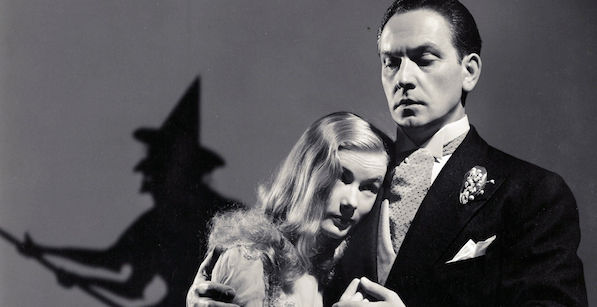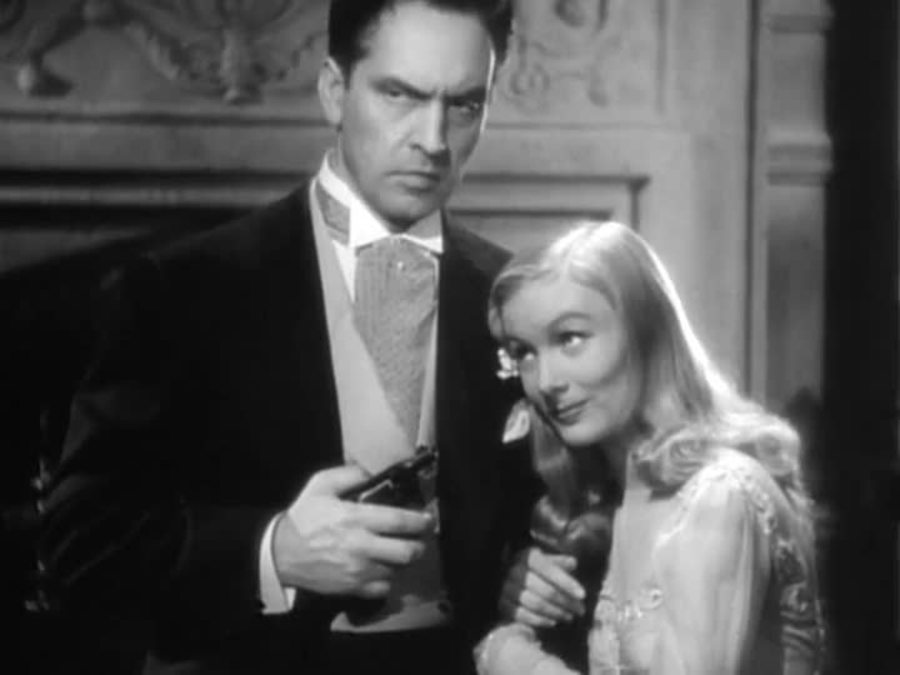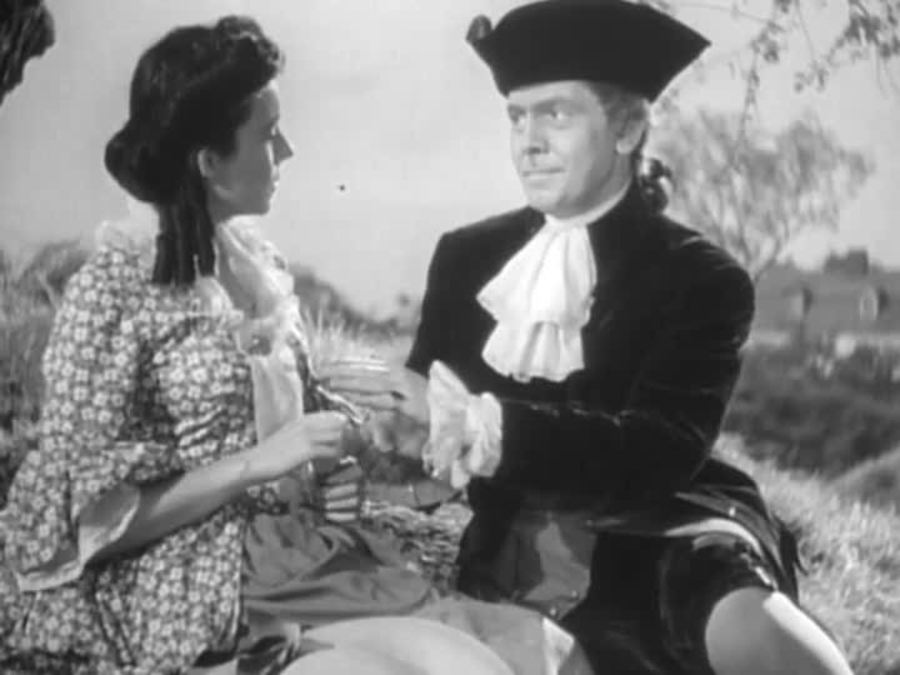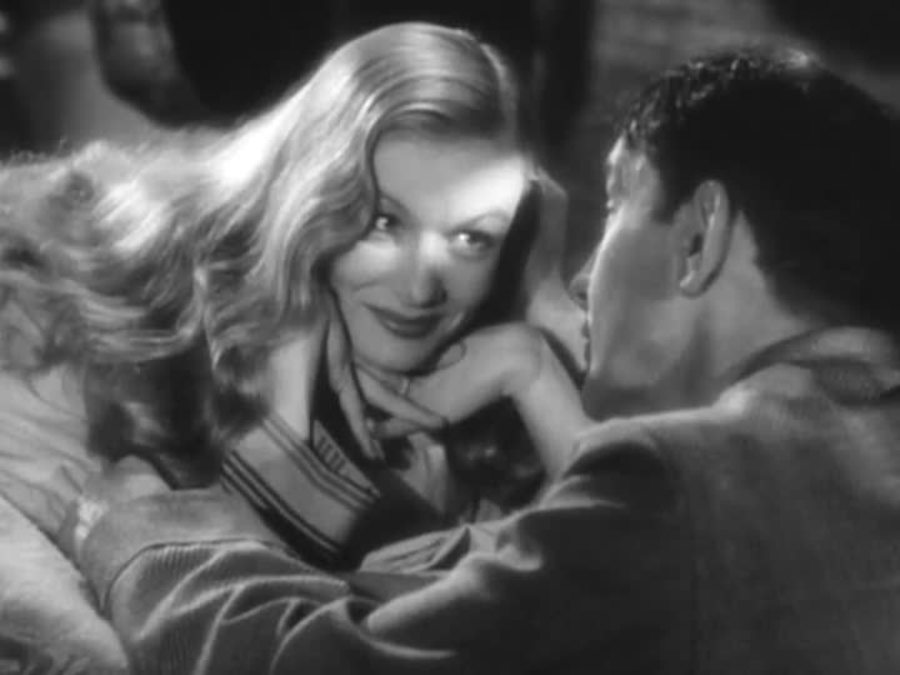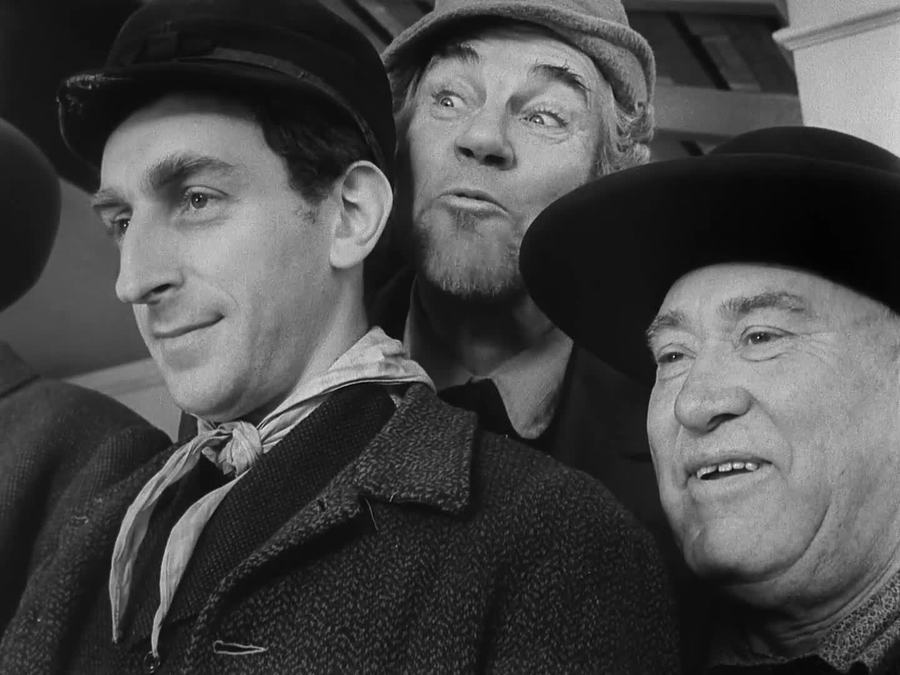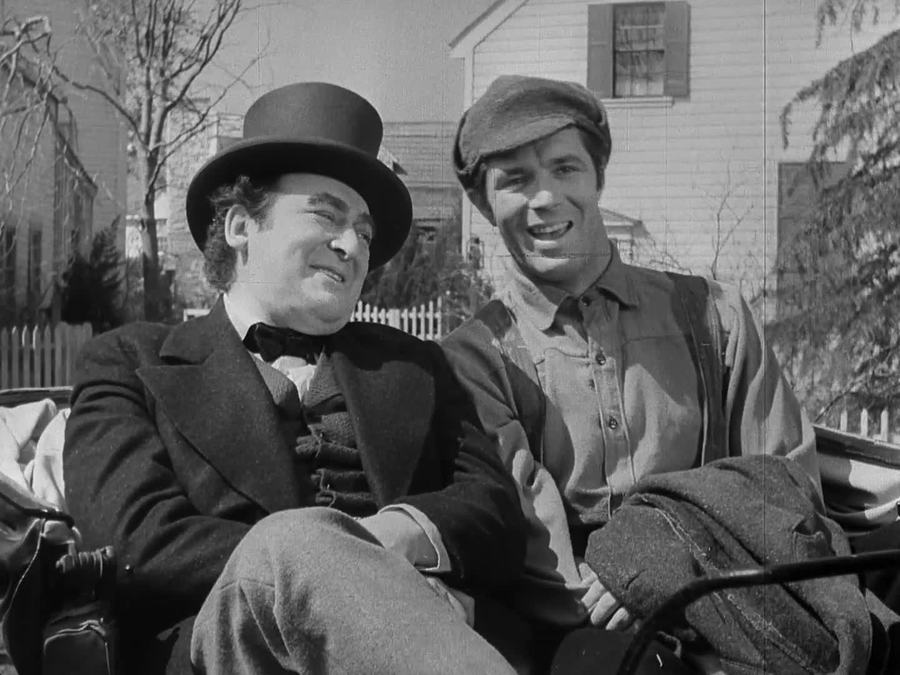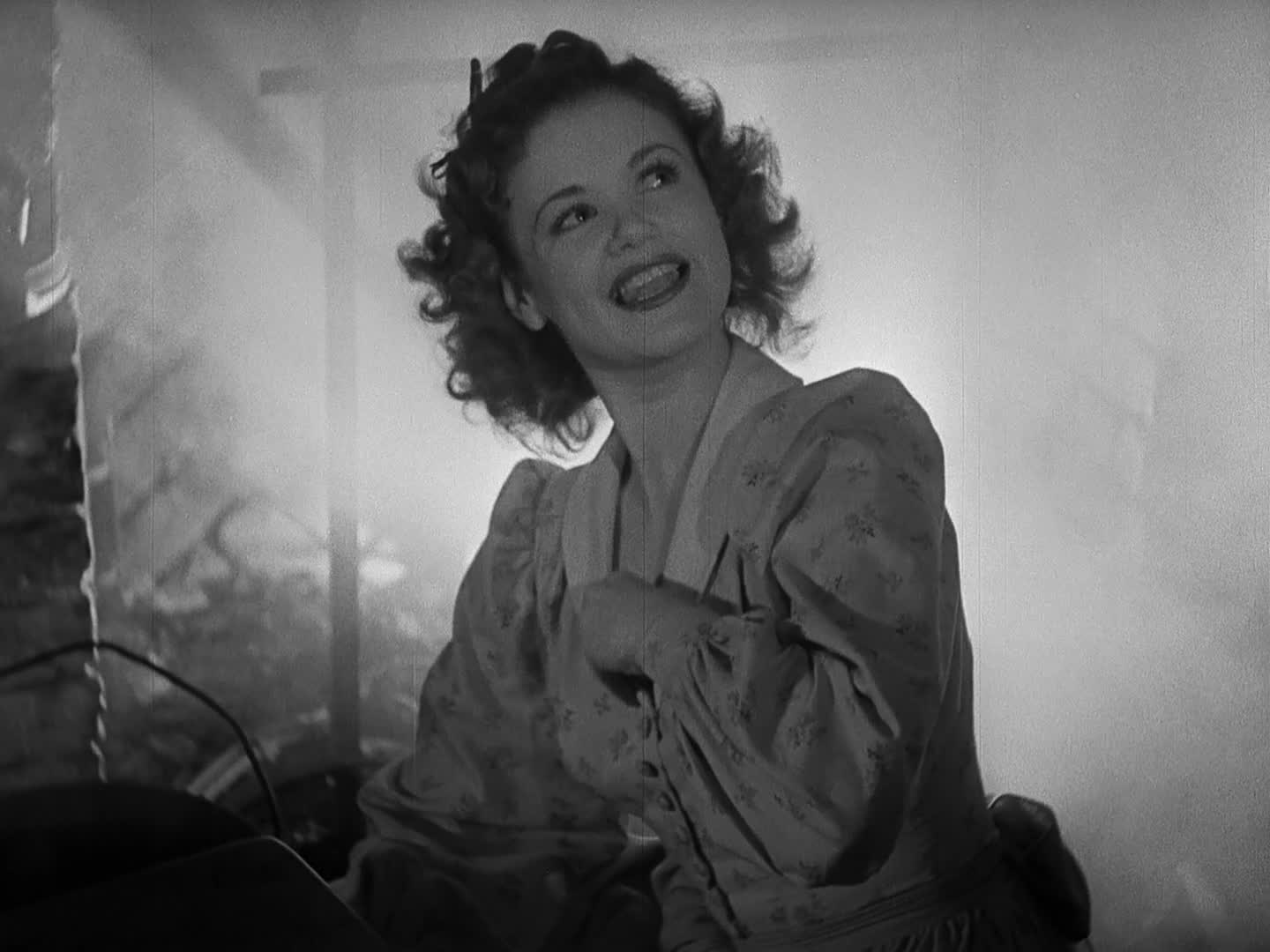Film genre is a slippery business. Scratch the surface of classical Hollywood, and you’re sure to turn up comedies composed as action movies, noir-inflected westerns, musicals kissed by the avant-garde. The supernatural isn’t a genre, per se, but one typically expects to find it safely ensconced in horror, science fiction, perhaps the occasional star-crossed melodrama—not set loose in a screwball comedy or a daffy social problem picture, but that’s exactly what happens in I Married a Witch (1942) and The Devil and Daniel Webster (1941), two of the more endearingly odd artifacts of 1940s Hollywood.
Both films were directed by émigrés. The French fantasist René Clair caught a break when Preston Sturges prevailed upon Paramount to buy the rights to Thorne Smith’s novel, The Passionate Witch. Further sweetening the deal was the prospect of a new vehicle for Veronica Lake, who a year earlier had starred opposite Joel McCrea in Sturges’s Sullivan’s Travels (1941). The production was by all accounts vexed, with Sturges eventually withdrawing as producer, Lake and the wooden (fittingly, given his role as a callow pol) male lead Frederic March frequently at odds, and one screenwriter after another heading for the exit. One of these was Dalton Trumbo, who according to Diane Jacobs’s book Christmas in July: The Life and Art of Preston Sturges resigned from the picture because “at no time have I had any idea what the next sequence would be.”
That assessment squares with Clair’s wildly seesawing film, but if you can get past its inconsistencies, I Married a Witch has much to recommend it. We open in colonial Salem: a young woman and her father are condemned to burn after being accused of witchcraft by the Puritan Woolley. Advancing a distinctly long view of what Stanley Cavell calls the “Comedy of Remarriage,” the young woman condemns Woolley’s male descendants to unhappy couplings. Several generations later, a bolt of lightning frees Jennifer (Lake) and father Daniel’s (an irascible Cecil Kellaway) spirits to prowl the no less starchy New England of 1942. They find Woolsey’s progeny running for governor on the strength of his soon-to-be father-in-law’s political capital. Jennifer accidentally drinks a love potion intended for the younger Woolley, and soon father and daughter are trading tricks against the backdrop of staid Connecticut—a scenario that draws liberally from the gambler father and daughter’s showdown under the nose of Henry Fonda’s unsuspecting cad in Sturges’s The Lady Eve (1941).
Indeed, it often seems like I Married a Witch is feasting on the leftovers of a dozen screwball comedies, but who could complain when Clair ups the ante of the obligatory wedding kerfuffle with an actual tempest? And if it takes a supernatural premise to see Lake sliding down a grand stairwell and wolfing down platefuls of pancakes, so much the better: how rare for a 1940s actress to have fun being bad and get away with it. The film sneaks in plenty of other sly subversions under cover of black magic, especially in the buildup to Woolley’s election. Eager to grant her fiancé’s wish for power, Lake easily turns the citizenry’s jeers into rapturous applause. Needless to say, wartime Hollywood wasn’t generally in the habit of lampooning the democratic process.
In The Devil and Daniel Webster, by contrast, it is precisely a full-throated defense of American system that banishes the devil from New Hampshire. The film, adapted from Stephen Vincent Benét’s short story, offer an unusual blend of homily and hallucination. Plagued by bad luck, the farmer Jabez Stone (James Craig) finds the devil waiting in his barn—one Mr. Scratch, played by Walter Huston somewhere between a leprechaun and bartender. Poor Stone (to say nothing of James Craig) doesn’t stand a chance against so charismatic a scourge. He signs his soul away for a pile of gold and in short order is scolding the help for scuffing the carpets of his mansion. How the eponymous senator from Massachusetts figures into this moral tale is difficult to say, thought the great orator is eventually enlisted to plead Stone’s case before a “jury of the damned” headed by none other than Benedict Arnold.
Ridiculous as it would seem to actually visualize this bit of supernatural speechifying, Webster’s closing argument would be right at home in the previous decade’s most striving social problem pictures. There is a strong undercurrent of class consciousness throughout The Devil and Daniel Webster: the Daily Worker might have pleased at how neatly the film graphs the farmer’s moral decline onto his ascendancy as a capitalist. Flush with the misbegotten windfall, he hires his freshly alienated neighbors to work his farm so that he might indulge in fox hunting. His monopoly on fertile land blocks an organized grange from gaining a foothold, making The Devil and Daniel Webster as much about unions and bosses as good and evil.
But if the film’s politics have one foot solidly in the 1930s—and here it’s worth noting that Dieterle also directed Blockade (1938), a Spanish Civil War drama that would be revived by HUAC—it’s a vision knocked completely cockeyed by the florid expressionism found informing Joseph August’s cinematography and Robert Wise’s editing. The standard line is that German expressionism arrived in Hollywood as film noir, and so it’s fascinating to see the same stylistic tropes playing out in a different generic context. As a former actor in Max Reinhardt’s company, Dieterle was well prepared to pull out the stops in accentuating the psychological dimension of the protagonist’s Faustian bargain.
What really sticks is neither the film’s politics nor its brazen style, however, but rather the first moment we see Simone Simon backlit by a roaring fire. She appears immediately after Stone’s son is born, taking the place of the family’s nurse in a body snatcher-ish switcheroo. The ever excitable Huston may get the film’s best lines, but Simon, at ease and all the more unnerving for it, actually conjures another world. Future RKO producer Val Lewton would cast her as the star of Cat People (1942), the first in a string of indelible B movies that offered a more internal, poetic understanding of the supernatural. It was that film’s director, Jacques Tourneur, who observed that, “During war, for some mysterious reason, people love to be frightened.”

